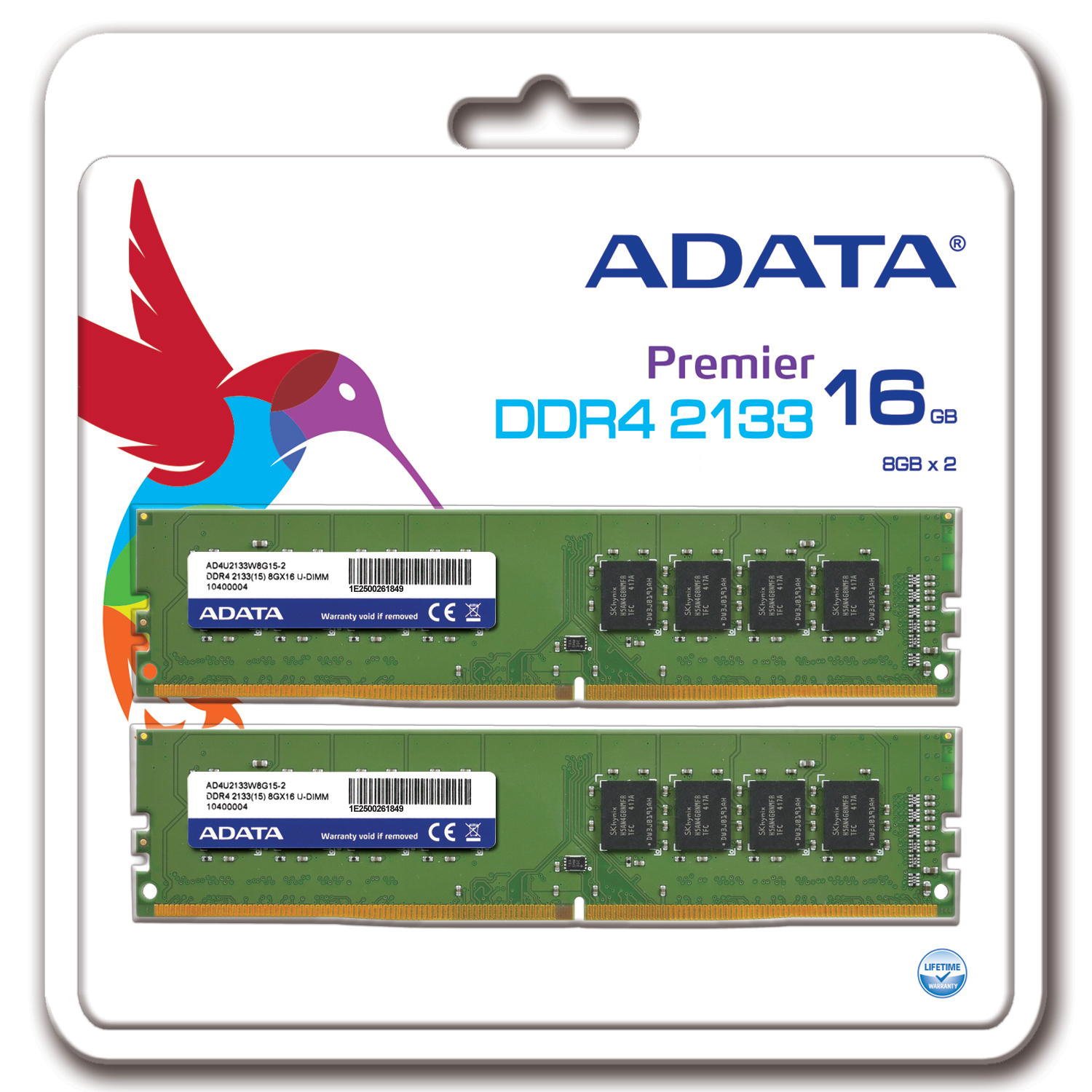Adata's DDR4 Memory Modules Are Finally Arriving
Adata's DDR4 memory modules are coming to shelves soon.
Back at Computex 2014 we saw DDR4 memory in action, where we made an Adata employee very nervous by making it appear as if we were trying to see information they were obviously trying to hide. Now, the company has announced this memory, and we finally have the details.
The memory is DDR4-2133, which isn't much faster than high-end DDR3 memory. In fact, there is faster DDR3 memory. That's normal though, and we've seen this pattern in the past with the release of DDR3, as well. Mind you, one of the biggest goals of DDR4 is lower power consumption, so rather than running at 1.5 or 1.65 V, this memory runs at just 1.2 V. The memory modules will provide a bandwidth of about 17 GB/s. Another target of DDR4 memory is higher density, allowing for larger-capacity DIMMs, though we will probably only be seeing that a bit further down the line.
Timings for the modules are set at 15-15-15, and they are built to be used with the upcoming X99 platform.
These memory modules will be available in kits of two DIMMs, with total capacities of either 8 GB or 16 GB. There is no exact word on pricing or availability yet. We have reached out to Adata and will let you know when we hear back.
Update: Despite the image above, Adata will only be shipping single-DIMM kits. The 4 GB module will cost $69.99, while the 8 GB modules are priced at $129.99.
Follow Niels Broekhuijsen @NBroekhuijsen. Follow us @tomshardware, on Facebook and on Google+.
Get Tom's Hardware's best news and in-depth reviews, straight to your inbox.
Niels Broekhuijsen is a Contributing Writer for Tom's Hardware US. He reviews cases, water cooling and pc builds.
-
InvalidError 2133-15 DDR4 when there is 2133-9 DDR3 @ 1.5V on the market... not convinced those DDR4 DIMMs will be a hit with the X99 crowd that is not exactly known for caring about saving 3-5W - particularly if it comes with any sort of performance penalty like the 66% higher latency on DDR4 would.Reply
Well, the DDR4 transition has to start somewhere... even if the starting point seems to make little to no sense. -
hypergon Those timings are really bad, I think we'll have to wait for high frequency dimms with 16Gb each until DDR4 is worth itReply -
delellod123 has it been confirmed or denied whether HaswellE CPU's will fit into the x79 socket? Or was ivy end of the line for x79. About a year ago, it was rumored the haswell-e would have a ddr3/4 controller and fit x79?Reply -
InvalidError Reply
From what I have read, it seems like LGA2011-3 is effectively a new socket which requires x99, meaning IB-E is end-of-line for current LGA2011 motherboards.13888598 said:has it been confirmed or denied whether HaswellE CPU's will fit into the x79 socket?
-
Drejeck the lowering of voltages is just to keep heat and power consumption in check, but if you take a DDR133 module it will consume 4 times less than a DDR4 module at 2133. Given the performance increase it still looks like a worthy compromise and in the desktop market a 20W difference is nothing.Reply
We will have to address heat dissipation because of TSV stacking NANDs and so higher heat density. I really hope we abandon that aluminum heresy going on this days to address the problem with copper plating like Patriot Viper Xtreme 2000 9-10-9 have and they are regular height. We will probably see LP banks later and with lower capacity than the maximum 128GB unless in the meantime 20nm NANDS go down another two steps. -
rantoc I'm considering getting the X99 with an I7-5930k (seems to be the best pick for gaming, better pcie connectivity than then 5920k and 500mhz faster than the 5960x, also more likely to overclock better) along with some descent DDR4 (As for the ddr4 comments above, there are other benefits to DDR4 than just basic ras/cas and power savings)Reply
What do you guys think? Aim for the per core slower octa or the quicker hexa core for gaming!? -
InvalidError Reply
Regular DIMMs already have built-in copper heatsinks: the ground and power planes in the PCB itself. The DRAM chips' packaging is made of plastic or epoxy, which are far worse thermal conductors than aluminum so the bulk of the DRAM's heat goes in the PCB through the solder balls anyway. Extend the PCB by 5-10mm, fill the extra area with copper planes and you can ditch the silly heat-spreaders altogether.13889539 said:I really hope we abandon that aluminum heresy going on this days to address the problem with copper plating -
zfreak280 Reply2133-15 DDR4 when there is 2133-9 DDR3 @ 1.5V on the market... not convinced those DDR4 DIMMs will be a hit with the X99 crowd that is not exactly known for caring about saving 3-5W - particularly if it comes with any sort of performance penalty like the 66% higher latency on DDR4 would.
Well, the DDR4 transition has to start somewhere... even if the starting point seems to make little to no sense.
I hope you do realize that 2133-15 DDR4 will not have a 66% performance penalty over 2133-9 DDR3.

